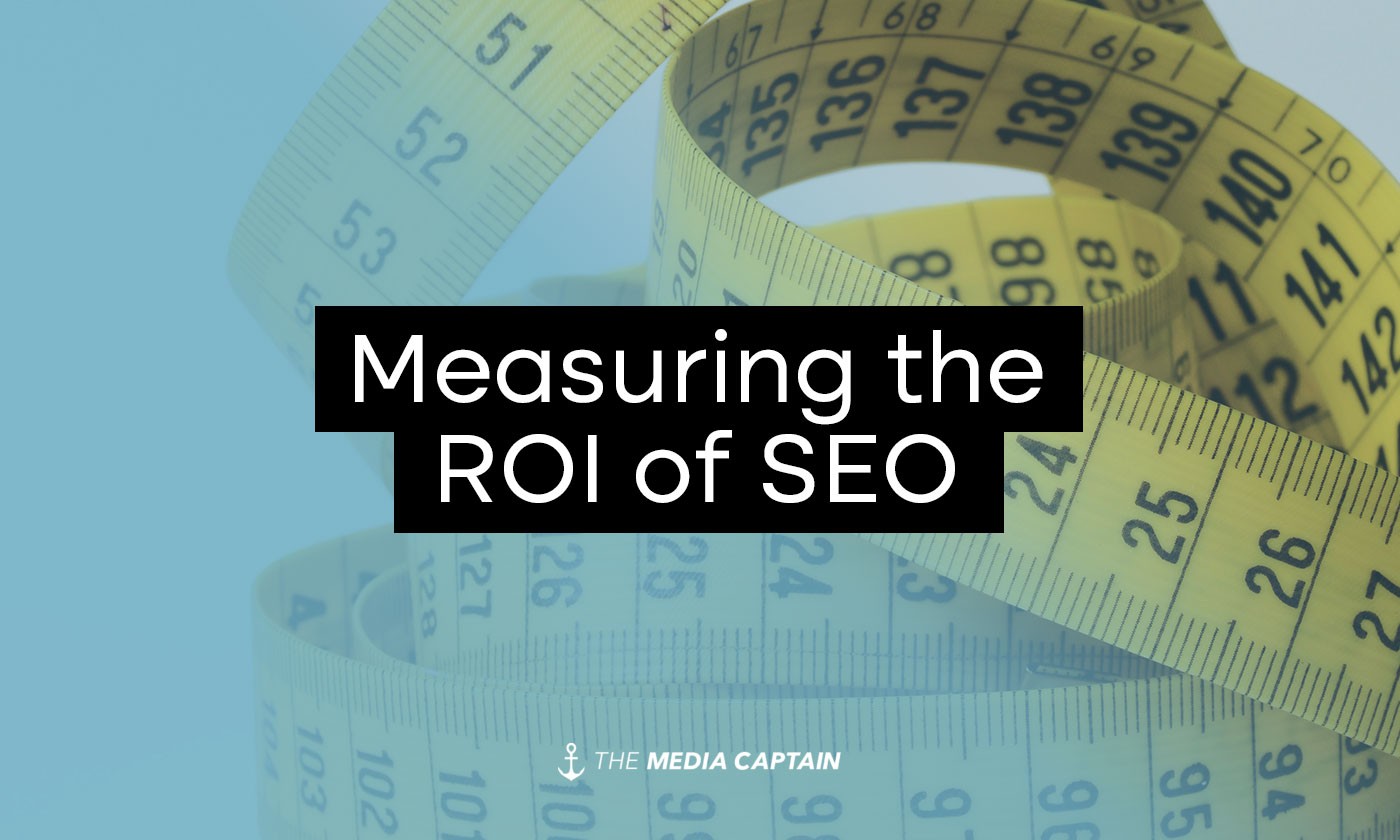How to Measure the ROI of SEO : The ROI of SEO

The commercial value of all SEO efforts relative to their expense is estimated by ROI of SEO. In concept simple, but in actual use complicated.To determine SEO’s return on investment, most companies use this formula:
(Investment gain – Investment cost / Investment Cost.)
Understanding ROI (return on investment) of SEO is essential for any business owner. For in-house and agency marketers, this could even be more the case. If you are unable to show that your significant effort is worth the cost, you can’t put it into action.
We’ll explain how to calculate SEO’s return on investment below. One by one.
What Does ROI of SEO Mean?
The amount of money that SEO efforts bring in for a company relative to their expenses is measured by the ROI of SEO. It’s among the most crucial issues for any management or SEO consultant. (Or actually, anyone doing SEO.)
It facilitates connecting your work to organizational objectives. If your SEO approach generates more income than it costs, you will have a good return on investment.
But SEO isn’t a magic bullet. Furthermore, because noticeable SEO gains take time to materialize, calculating your ROI of SEO is difficult. Nonetheless, measuring it is still a crucial KPI (key performance indicator).
The importance of SEO ROI Measuring
53% of traffic to an average firm comes from organic search. Furthermore, nowadays, organic search plays a role in nearly every transaction.
Therefore, it’s important that you understand the financial benefit SEO provides to your company. It’s hard to tell what’s working and what isn’t if you don’t know how much money you make for every dollar you spend on SEO.
Furthermore, while other SEO KPIs are important to monitor, positive ROI is the gold standard for profit. Showing a favourable return on investment will make it much simpler to demonstrate success and win over stakeholders.
How ROI of SEO Is Measured?
It’s easy to calculate the ROI of SEO. Quite comparable to working out the return on any other kind of investment. Basically, the ratio of SEO earnings to SEO expenses.
This implies:
ROI of SEO is calculated as (cost of investment – value of conversions) / investment cost.
Let’s analyze each.
Evaluate the Investment in SEO
You must first determine how much your entire SEO investment will cost.
Add up all of the channel-related expenses. This should be your investment amount.
Usually, these expenses may consist of:
Internal SEO Tools
These are workers that dedicate their entire workday to SEO.
Certain positions, such as developers or copywriters, might only occasionally work on SEO-related projects. Reduce their expense to an hourly or daily charge in this instance.
Keep track of the time they devote to SEO projects and factor it into the estimate you provided.
Agencies and Freelancers
For independent contractors and SEO agencies, tracking SEO spending is easy. since the majority of agency agreements employ a retainer arrangement, typically with a set monthly cost.
Immediately include agency fees (or freelancer rates) in your investment computation.
Tools
Add the monthly cost of any SEO tools your team employs, such as Semrush, to your calculation. If there are any instruments shared by other departments, think about reducing a portion of the price.
Total these expenses. That is your whole SEO investment cost.
Monitor and Examine Conversions
Subsequently, monitor and quantify the worth of each transaction.
You’ll need Google Analytics (or a comparable program) for this stage. You may use it to quickly and simply calculate the income generated by organic search for your company. However, every firm has a distinct set of conversions to measure and a different value attached to them.
E-commerce businesses, for example, can utilize tracking to extract sales information from their online transactions. And accurately calculate their earnings. However, lead generating companies need to define their objectives (such as form submissions) and give them monetary values. This is how lead generation and e-commerce companies may set up conversion tracking.
Monitoring Conversion Rates in E-Commerce
In Google Tag Manager, add ecommerce events to your website to begin gathering ecommerce conversion statistics.
In case you haven’t set it up yet, you can adhere to Google’s guidelines. You’ll get an e-commerce report with comprehensive details about your transactions as soon as you begin monitoring.
Navigate to “Reports” -> “Monetization” -> “Ecommerce purchases” in Google Analytics.
As such:
Next, apply an organic traffic filter.
- Press “Add filter.” Next, choose “Source Medium” as the Dimension and “Google / organic” as the Value.
- then select “Apply.”
Monitoring the Values of Lead Generation Conversions
It may be more difficult to track conversions if your website doesn’t generate any revenue. A lead (or a conversion), in contrast to an e-commerce transaction, has no assigned value. Until you designate one.
This is possible using Google Analytics.
- Go to “Events” -> “Admin.”
- Next, select “Create event.”
- Next, make an event for every transaction you make.
These might be any activities that help your firm succeed. such as filling out a form, signing up for a free trial, or visiting a certain website.
Let’s set up an event for the submission of a form. Give your event a name first. Next, choose your “Value,” “Operator,” and “Parameter.” Your conversion ought to be visible under “Existing events.” Next, flip the “Mark as conversion” switch.
Your event will now appear as a conversion under the “Conversions” page. Your conversion still needs to have a monetary value assigned to it.
Attend your event to do this. Click “Add modification” under “Parameter configuration.”
Additionally, put the value (e.g., “50” for 50 euros) and the currency type (e.g., EUR) in the “Parameter” area.
After selecting “Save,” you’re done.
This can assist you in determining the return on investment from your SEO. An event is given a price tag each time it is activated.
- Determine Your Investment’s Return.
Calculating your return on investment from SEO is simple if you have the necessary data.
Apply the previous formula you saw:
ROI on SEO is calculated as ( value of conversions – cost of investment ) / investment cost.
Project SEO Return on Investment
Now that you are aware of how to calculate ROI of SEO, you can begin to consider forecasting. You will probably need to forecast how much growth and income you plan to achieve, whether you work for an agency or in-house. Either way, it’s critical to project ROI of SEO. It facilitates resource allocation, SEO effort prioritization, and modification.
To begin with, think about the following:
- Previous SEO results for your website
- Your potential for traffic
- Your conversion rate on average
Use Semrush to Monitor Your SEO Progress
Finding out your ROI of SEO is a useful tool for demonstrating the effectiveness of your job. Additionally, you may utilize it to get support for spending more money on your SEO campaign.
It should be simple to request additional funding for personnel, new equipment, and other resources if you can demonstrate a consistent return on investment from SEO.
Furthermore, Semrush may assist you in reaching your desired ROI of SEO if it isn’t there yet.
All in one location: assess your rivals’ SEO strategies, evaluate your own SEO performance, and generate optimization recommendations.
Final thoughts on ROI of SEO
Instead of delving into all the challenges and constraints involved in calculating ROI of SEO, I might have chosen the simple route and only skimmed the surface. However, as this is the most important issue to stakeholders, we should all be competent and self-assured while discussing these issues.
Get more informative marketing news and trending marketing topics with just one more click. Click Here…

